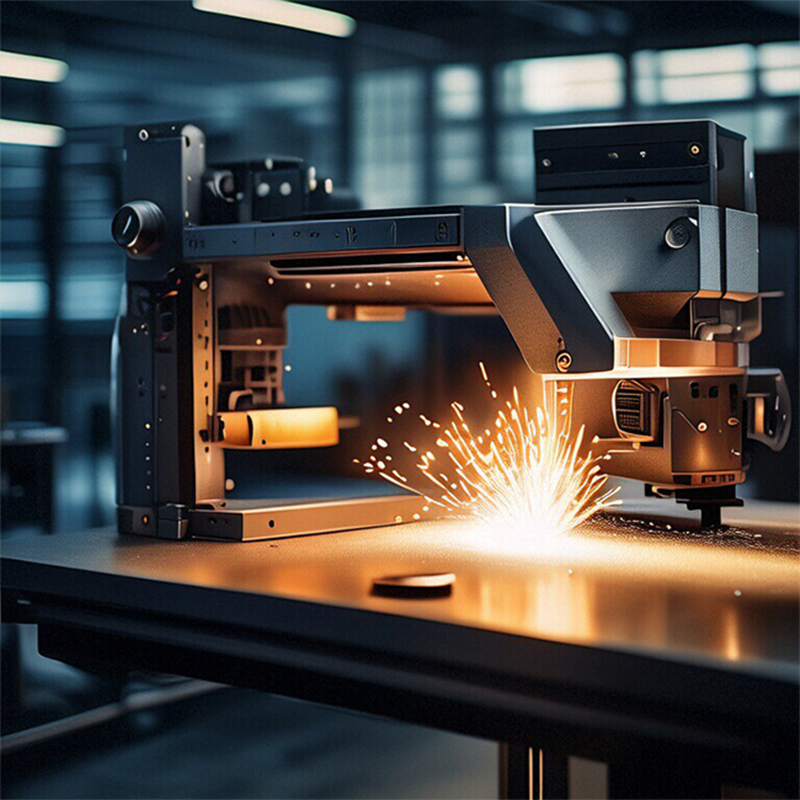Building 49, Fumin Industrial Park, Pinghu Village, Longgang District
Sunday Closed
Home / Products / Sheet Metal
Welcome to 7 Swords, your trusted partner in sheet metal fabrication. With a steadfast commitment to quality and precision, we specialize in transforming raw sheet metal into customized components for various industries. Explore our comprehensive range of sheet metal fabrication services to see how we can elevate your manufacturing capabilities and bring your ideas to fruition seamlessly.
Sheet metal fabrication is a fundamental process in manufacturing industries, encompassing the transformation of flat sheets of metal into various shapes and structures. This versatile technique plays a crucial role across multiple sectors, from automotive and aerospace to electronics and construction. Understanding the professional knowledge behind sheet metal fabrication is essential for both manufacturers and consumers alike.
1. Materials and Selection
One of the first considerations in sheet metal fabrication is the choice of material. Common metals used include steel, aluminum, stainless steel, and copper, each offering distinct properties such as strength, corrosion resistance, and conductivity. The selection depends on the specific application requirements, ensuring optimal performance and durability of the fabricated parts.
2. Design and Engineering
Effective sheet metal fabrication begins with meticulous design and engineering. CAD (Computer-Aided Design) software is integral in this phase, allowing designers to create precise 2D and 3D models of components. Design considerations include material thickness, bend radii, tolerances, and assembly methods. Experienced engineers optimize designs for manufacturability, aiming to minimize waste and production costs while maximizing functionality.

3. Cutting and Forming Techniques
Once the design is finalized, the fabrication process typically starts with cutting the sheet metal to the required size and shape. Techniques such as laser cutting, plasma cutting, or waterjet cutting are employed based on material type, thickness, and intricacy of the design. Precision cutting ensures clean edges and accurate dimensions.
Forming follows cutting, where metal sheets are bent, punched, or pressed into desired shapes using machinery such as press brakes, stamping machines, or roll forming equipment. This step is critical in achieving the intended structural integrity and aesthetic appearance of the final product.
4. Welding and Assembly
Joining different components or forming complex assemblies often involves welding, a fundamental skill in sheet metal fabrication. Techniques like MIG (Metal Inert Gas) welding, TIG (Tungsten Inert Gas) welding, or spot welding are utilized based on the material thickness and joint requirements. Proper welding techniques ensure strong bonds while maintaining the integrity of the metal.
Assembly of fabricated parts may also include additional processes such as riveting, fastening, or adhesive bonding to complete the product assembly.

5. Finishing and Surface Treatment
To enhance durability and aesthetics, sheet metal products undergo finishing processes. Surface treatments like painting, powder coating, anodizing, or plating provide corrosion resistance, improve appearance, and meet specific environmental requirements. Deburring and polishing are also essential to remove sharp edges and achieve a smooth finish.
6. Quality Control and Inspection
Throughout the fabrication process, rigorous quality control measures are implemented to ensure compliance with design specifications and industry standards. Inspections may involve dimensional checks, material testing, weld inspections, and surface quality assessments. Quality assurance guarantees that fabricated parts meet customer expectations for performance, reliability, and safety.




FAQ
1. Are you a manufacturer or a trading company?
We are a factory located in Shenzhen, China, with 20 years of rich experience,
covering 6000 square meters. Complete facilities, including 3D quality inspection equipment, ERP system and 40 machines. If necessary, we can provide you with material certificates, sample quality inspection and other reports.
2. How to get a quote?
Detailed drawings (PDF/STEP/IGS/DWG...), including quality, delivery date, materials, quality, quantity, surface treatment and other information.
3. Can I get a quotation without drawings?
Can your engineering team draw for my creativity? Of course, we are also glad to receive your samples, pictures or detailed size drafts for accurate quotation.
4. Can you provide samples before mass production?
Of course, the sample fee is necessary. If possible, it will be returned during mass production.
5. What is the delivery date?
Generally, the sample lasts for 1-2 weeks and the batch production lasts for 3-4 weeks.
6. How do you control quality?
(1) Material Inspection - Check material surfaces and approximate dimensions.
(2) First inspection of production - ensure
critical dimensions in mass production.
(3) Sampling inspection - check the quality before delivery to the warehouse.
(4) Preshipment inspection - 100% inspection by QC assistant before shipment.
7. After sales service team
If you have any problems after receiving the product, you can provide feedback through voice call, video conference, email, etc. within one month. Our team will provide you with solutions within a week.

Copyright © Shenzhen Perfect Precision Products Co., Ltd. All Rights Reserved — Privacy Policy — Blog